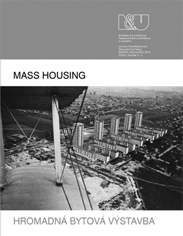“AN APARTMENT WITH ALL CONVENIENCES” WAS NO PANACEA Mass housing and the Alternatives in the Soviet Period in Tallinn
“AN APARTMENT WITH ALL CONVENIENCES” WAS NO PANACEA Mass housing and the Alternatives in the Soviet Period in Tallinn
Author(s): Mart KalmSubject(s): Cultural Essay, Political Essay, Societal Essay
Published by: Historický ústav SAV, v. v. i.
Keywords: residential architecture; mass housing; Soviet Estonia; Tallinn; housing cooperatives; living conditions; apartment; immigration; russification
Summary/Abstract: The story of Soviet mass housing is generally well known – including Khrushchev’s enthusiasm for the establishment of industrial building practices in the second half of the 1950s, the striking contrast between the prefabricated housing developments and earlier academic Stalinist buildings, and the uniformity of the built environment in the entire Eastern bloc from the 1970s onward due to the mass construction of identical prefab residential districts. The idea of building a large number of identical apartments according to standardised designs had already been the aim during the Stalinist period, but due to a lower level of mechanised building practices they never managed to achieve this, and it was during the years that followed that a vast number of apartments were built using industrial methods. Four-fifths of Estonia’s current housing was built in the period 1961 – 1990. As elsewhere in the Eastern bloc, the prefab dormitory suburbs in Estonia have an incomplete infrastructure and are disproportionately large for the cities to which they are attached. Despite the universality of mass housing as an instrument in the process of modernisation and the inflexibility of the political system in the Eastern bloc and the state-run command economies, a range of different practices are nonetheless encountered. Even though the buildings with their room-sized panels constructed using the Camus technology, purchased from France at the end of the 1950s, are all very similar – from the buildings next to the Brandenburg Gate in Berlin to those in Vladivostok on the Korean border – they were applied in quite different economic circumstances and differing cultural contexts. Hence, the reception given to mass housing, its meaning, as well as the subsequent critique and search for alternatives varies from one country to the next. Mass housing construction as a colonisation tool Adrian Forty wrote that in Britain the construction of mass housing in the post-war period always had the connotation of being left-wing and subsidised, and one would assume that in the Eastern bloc mass housing, because of its totality, was viewed as something neutral – a symbol of progress that improved living conditions for every member of society. It is natural that today the buildings from that time are held in derision, seen as badly built stop-gaps from poorer times, but in certain regions, like Estonia and Latvia, these buildings carry an additional significance because mass housing construction also worked as an immigration pump and as such supported Russification. During WW II, the Soviet Union occupied Estonia. After the war the nomenklatura was sent to sovietise Estonia, and they arrived with the coloniser’s blissful knowledge that it was the Soviet power that had liberated Estonians from the yoke of capitalism, that through the Russian language Estonians would become civilised and that now the sun shone only from Moscow. The fact that the locals...
Journal: Architektúra & Urbanizmus
- Issue Year: 46/2012
- Issue No: 3-4
- Page Range: 194 - 207
- Page Count: 14
- Language: English

